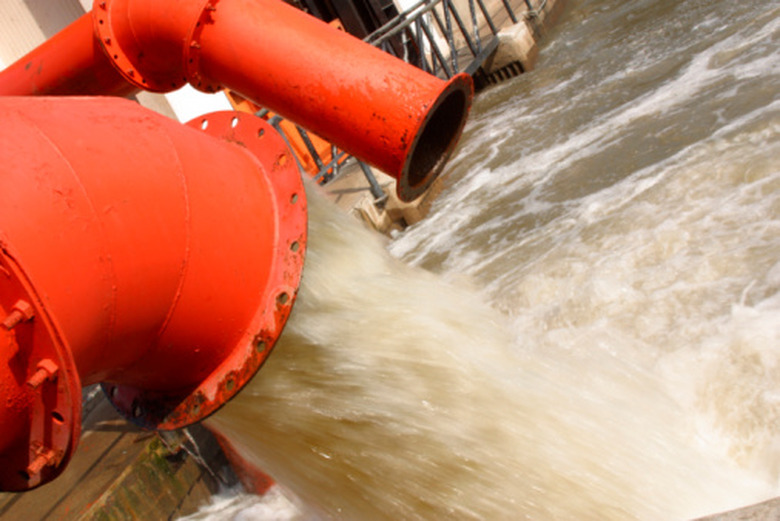The Microorganisms Found In Sewage
Microorganisms found in sewage originate from two sources–soil and sanitary waste. One milliliter of sewage typically contains between 100,000 and 1 million microorganisms, according to the Mountain Empire Community College website. While most of these organisms, such as various types of bacteria, play a pivotal role in the decomposition of waste and are considered an integral component of organic matter, some are pathogenic, or disease-carrying, and pose a threat to public heath.
Parasitic Bacteria
Parasitic Bacteria
Bacteria are single-cell organisms that proliferate in suspended matter, such as sludge. When they encounter a supply of nutrients, they feed by taking in food directly through the cell wall and reproduce quickly. Among the numerous types of bacteria in sewage, the most common types are fecal coliforms, which originate in human intestines and travel via human discharges. These parasitic bacteria require a living organism, or host, and a readily available food supply.
Pathogenic Bacteria
Pathogenic Bacteria
Specific forms of parasitic bacteria manufacture toxins that cause disease in the host organism. These pathogenic types of bacteria may be discharged by people who suffer from dysentery, cholera, typhoid fever and other diseases of the intestines. Pathogens typically found in sewage include Salmonella, Shigella, E. coli, Streptococcus, Pseudomonas aeroginosa, mycobacterium and Giardia Lamblia, according to the Water Quality and Health Council website. Shigellosis outbreaks have resulted from freshwater shellfish contaminated by wastewater flows, as chronicled by the U.S. Centers for Disease Control and Prevention. Due to population growth and increased discharge into wastewater, the resulting abundance of pathogenic bacteria overwhelms natural processes of decomposition and dilution.
Saprophytic Bacteria
Saprophytic Bacteria
Saprophytic bacteria devour dead organic substances, which helps to break down waste into inorganic and organic byproducts. These bacteria play a critical role in the treatment of sewage by facilitating or accelerating the decomposition process of organic matter. Without saprophytic bacteria decomposition may not occur. The different species of saprophytic bacteria perish after having played their part in the relevant stage of decomposition.
Viruses
Viruses
Among the microbes found in sewage are viruses, which are parasitical organisms that require living matter to feed on, grow and reproduce. Pathogenic viruses that exist in wastewater include polio and hepatitis. Various intestinal viruses, such as coxsackie, adenovirus and ECHO, or enteric cytopathic human orphan, are also found in sewage effluent. Another common type of virus in sewage, which preys upon bacteria but not humans, is known as a phage or bacteriophage. In contrast to bacteria, the number of pathogenic viruses in sewage is small. A single infectious virus may exist among an estimated million coliform bacteria, according to the Mountain Empire Community College website.
Cite This Article
MLA
Tang, Kay. "The Microorganisms Found In Sewage" sciencing.com, https://www.sciencing.com/microorganisms-found-sewage-8224693/. 24 April 2017.
APA
Tang, Kay. (2017, April 24). The Microorganisms Found In Sewage. sciencing.com. Retrieved from https://www.sciencing.com/microorganisms-found-sewage-8224693/
Chicago
Tang, Kay. The Microorganisms Found In Sewage last modified March 24, 2022. https://www.sciencing.com/microorganisms-found-sewage-8224693/
